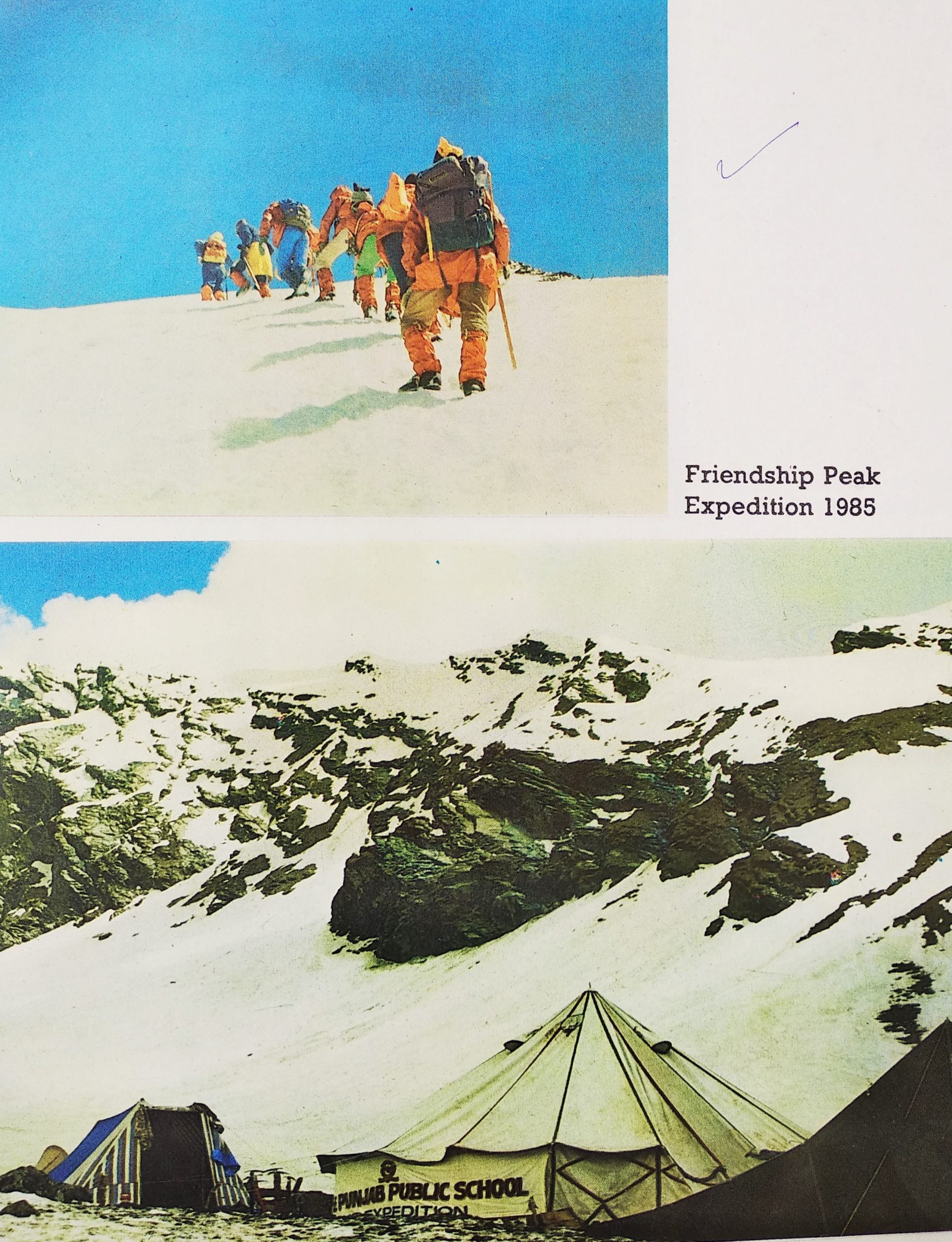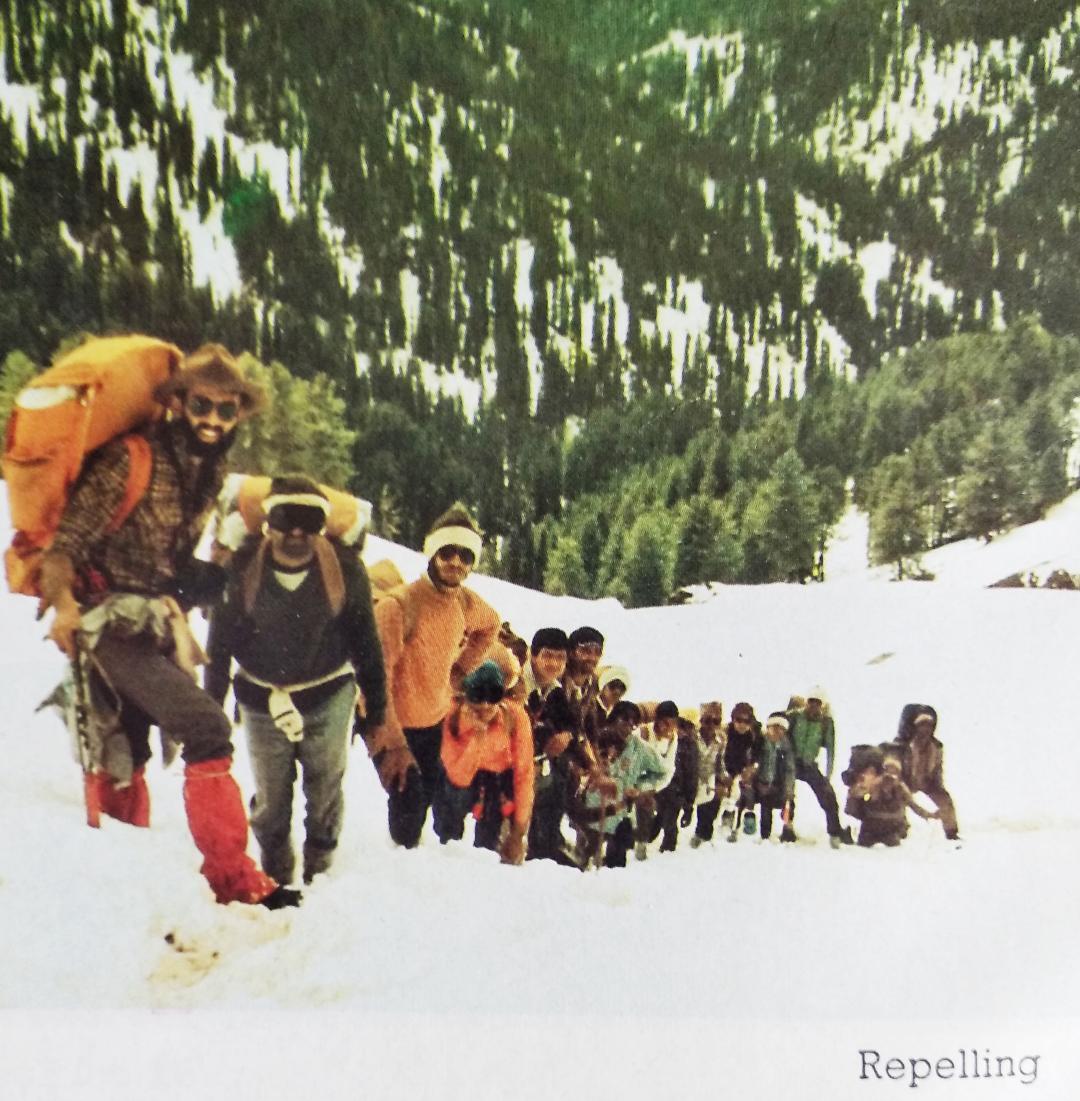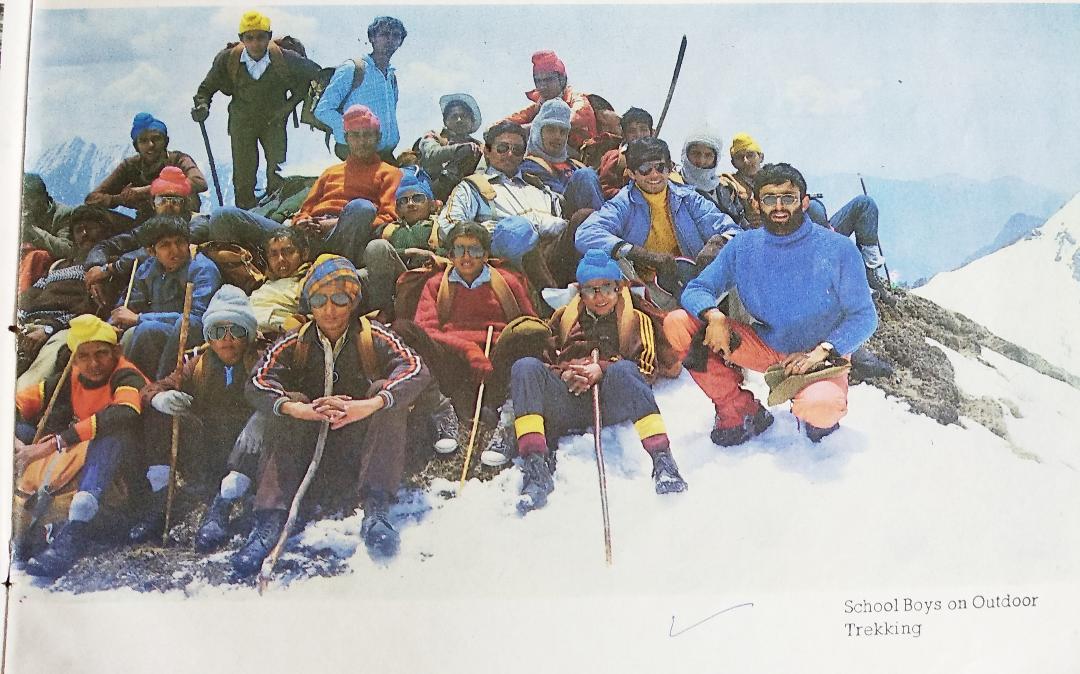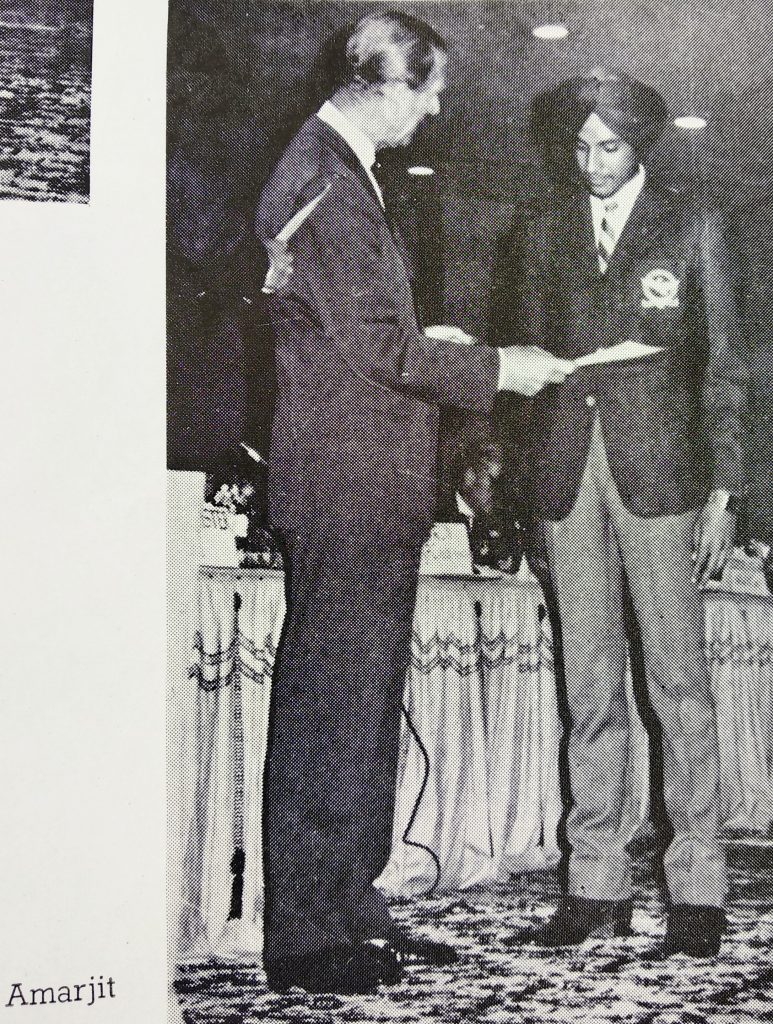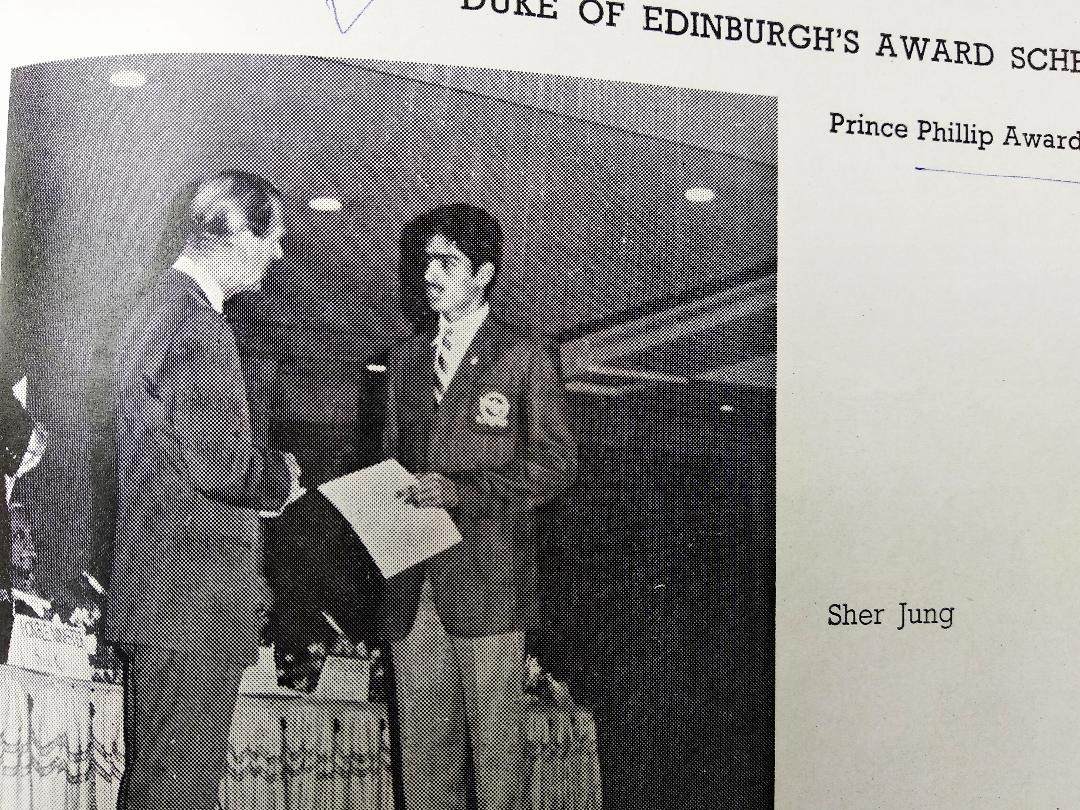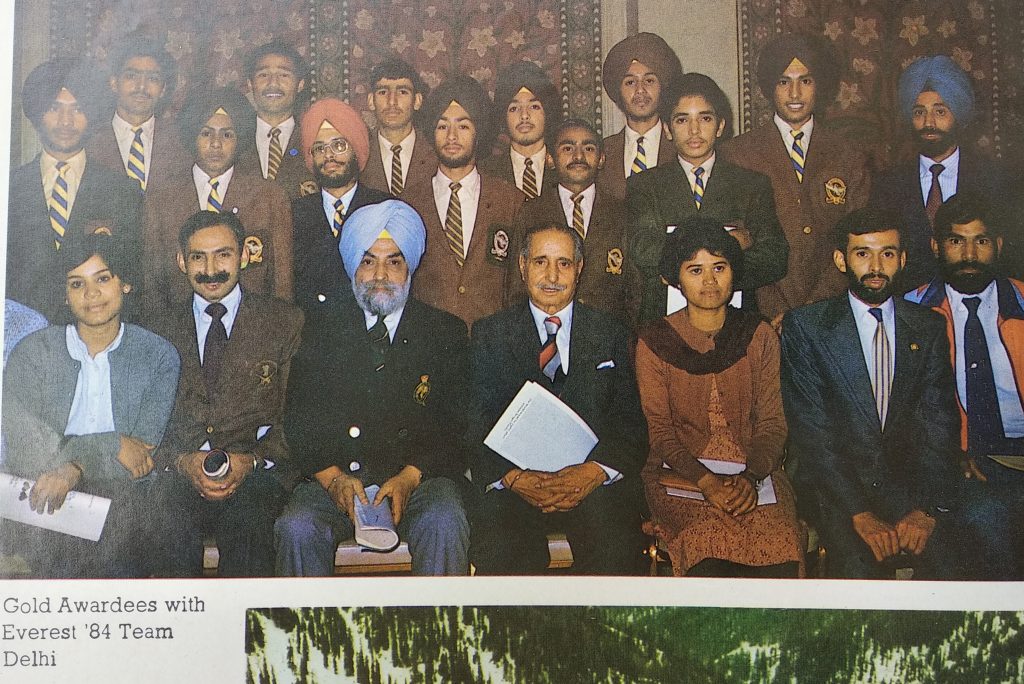
A School with a Difference
(This article written by my father-in-law on my request was published in The Tribune of 1st December 1985 to coincide with the occasion of celebration of Silver Jubilee of The PPS. This was at a time when the senior-most old Nabhaite of the young school in the army was probably only a Lt Colonel. The heading given by the author (A School with a Difference) made the school a distinct one. The newspaper , however, carried the heading as “Scaling Heights of Glory”. – The photographs have been added by me from school Souvenir -Dr Jashanjot, S-52-1967)
By Kulwant Singh Virk
Are there any mountain climbing schoolboys in Punjab—-the sort that go up the virgin Himalayan peaks covered with deep snow? Yes, there are some among those studying at the Punjab Public School, Nabha.
Last May, they climbed a peak called Mount Friendship, 5,300 metres (over 17,000 feet) high. It rises beyond Manali and is called “Friendship” because ambassadors of three countries decided to join hands in the first attempt at conquering it.
The thrill of the May success has not yet subsided at the school. “For a month and a half we followed a strict fitness schedule”, recalls Jagdeep Sanghera, a member of the team. “It included a run of four kilometres daily, two hours of swimming and general physical exercises.”
But there could be no training at Nabha in dealing with snow and hidden hill chasms. Even at the base camp there was over two feet of snow in the month of May. There was fresh snow on the way to the peak which hid the deep and dangerous chasms. But they made it to the top. “The space on the top was rather limited and we had to hold on to each other for a group shot”, says Sanghera excitedly. “On the way back one can glide down the slope of ice after the ‘safe point’ without bothering about the ropes”.
A girl student, Neena Bansal, is equally enthusiastic about a separate though less hazardous mountain expedition from Sabathu to Kumarhatti. “We went past grassy flats, herds of cattle and sheep, treaded mysterious paths and explored a strange new world”, she sums up. “I learned the real techniques of climbing a mountain with a rope and the setting up and dismantling of camps. The expedition has given me a strange courage and a strong will. I can spend a night or two in the densest forest quite alone.”
This Silver Jubilee year of the Nabha School (it was founded in 1960) has been a lucky one. The school has won the All India Public Schools Athletic Championship Trophy as also the Football Trophy.
What exactly is a Public School? The Headmaster, Group captain A.J.S. Grewal is quite clear on this. “In October 1939, Headmasters of seven residential schools organized The Indian Public Schools Conference. These and others admitted to the conference on satisfying the conditions of membership alone are entitled to call themselves Public schools. There are 55 member schools. If the Sainik Schools and Military Schools, which are connected with the government, are excluded, there are only 30 public schools in the country,” according to him.
Some essential features of a public school, according to him, are that all boys eat from a common mess. Its own governing board is the final authority in all administrative matters and the Headmaster has the right to select his own staff.
The Nabha School has 550 hostel seats. A few day scholars, including girls, are also admitted. Originally the money came from Post-War Services Reconstruction Fund meant for the rehabilitation of ex-servicemen. The Punjab Government gave the Secretariat building and Guest House of the old Nabha State to the school. There are vast lawns and gardens around these buildings for use of the school.
The Governor of Punjab is the Chairman of the Board of Governors. Other ex-officio members include the Chief Minister of Punjab, GOC-in-C Western Command, Chief Secretary, Punjab, and Commissioner, Patiala Division.
The Nabha School gave the country the idea of Sainik Schools. According to the first headmaster, Mr J. K. Kate, “when Mr Krishna Menon, the then Defence Minister, heard the news of the opening of the Sainik School in Nabha (it was given that name in the beginning), he called a meeting of Chief Ministers of all the States and persuaded them to start similar schools in their States”. He offered to send three officers from the Services to hold the posts of Principal, Headmaster and Registrar in each school.
All the Chief Ministers accepted his proposal and a chain of Sainik Schools was started in India. The syllabus, the scholarship scheme and the duration of the course prevalent at Nabha were adopted by these Sainik Schools. Quite a few Principals–designate from services were advised to visit Nabha and study the working of the School. Thus Nabha ceased to be a Sainik School by name but remained a pioneer in the field.
“In view of the special character of this school,” says Mr. Grewal, “the staff is recruited on merit from all over India. Teachers in the Senior Wing are post-graduates form Indian and foreign universities. “The day begins with physical exercises. This is followed by breakfast and the school assembly where students address the gathering. Then follow teaching periods till lunch time. After lunch the students have hobby periods followed by games. Our boys regularly participate in adventure courses conducted by the Himalayan Mountaineering Institute, Darjeeling and Nehru Institute of Mountaineering in Uttarkashi”. Treks to the valley of Flowers, Hemkunt, Badrinath, Kedarnath, Gangotri, Yamnotri etc. are very popular with the boys.
Asserting that there are good opportunities for children of poor parents to join the school, the Headmaster says that almost one-fourth of the students are recipients of scholarships from the Government of India and from Punjab, Haryana and Jammu & Kashmir Governments. There are merit-cum-means scholarships also. For the children of defence personnel upto the rank of a non-commissioned officer, scholarships are awarded out of Post-War Services Reconstruction Fund. A sepoy’s son is thus able to rub shoulders with a General’s son in the school. While admitting the students to the school, it is ensured that they enjoy sound health and are capable of joining the Armed Forces.
Mr. R D Chandola, a teacher, says, “All students enter on terms of absolute equality and live as equals throughout their stay in school. The only factor that produces inequality is personal ability and achievement. This cannot be avoided even in an ideal home.”
With the education they receive here, they easily find their way to coveted jobs in the defence services and other professions like medicine, police, accountancy, shipping, business administration and engineering. The school being young, its products have reached only the level of, say, a Deputy Inspector General of Police or a Lieutenant Colonel in the army.
To talk about only one area of achievement, one can refer to the Duke of Edinburgh’s Award Scheme operating in forty (40) Commonwealth countries. It challenges young people between 14 and 25years to serve others, to acquire new skills, experience adventure and make new friends. In 1983 the Duke himself visited India and presented the Gold Awards at a ceremony on November 23. Nabha School led the rest of India with 10 awardees while the famed Doon Schoolhad only six.
Prince Philip taliking to Tilakraj Arora and Sukhram Sandhu who looked after DEAS progamme in School in 1980s.
Photographs from the DEAS function held at Maurya Sheraton in New Dehli. Cheif guest was Prince Philip of UK hsband of Queen Elizabeth
The DEAS Gold award winners with members of Everest 1984 expedition team. Headmaster Gp Capt. AJS Grewal in center.
The author of the Book “The Indian Public Schools”, Mr Alfred D’Souza (1960s), has made an exhaustive study of the working of these schools. He writes, “Among British Public Schools the most famous are known as The Seven. In India, the best seven are: Doon School, Mayo College, Modern School, Scindia, Lovedale, Sanawar and The Punjab Public School, Nabha. These schools are , of course, not listed here in an evaluative rank order.”
